Disclosure: This article contains affiliate links. We may earn a commission from purchases at no extra cost to you, which helps our travel content.
¡Hola viajeros! Remember that feeling when you discover a place so authentic it makes your heart race faster than a World Cup final? That's Mopti for you—Mali's best-kept secret and a destination that stole my heart faster than I could say pinch me. Nestled at the confluence of the Niger and Bani rivers, this vibrant port city isn't on most travelers' radars, which is exactly why it should be on yours. During my week-long adventure last January, I traded Madrid's winter chill for Mopti's warm embrace and discovered a cultural tapestry so rich it rivals any European destination I've visited in my years crisscrossing the globe as a flight attendant. From navigating bustling markets where traders have perfected their craft for centuries to drifting along waterways in traditional pirogues as the sunset paints the desert sky, Mopti offers the kind of raw, unfiltered travel experience that's becoming increasingly rare in our Instagram-filtered world. Ready to discover Mali's 'Venice of the Desert' through local eyes? Vamos—let's dive in!
Navigating Mopti's Cultural Landscape
Let me be real with you—Mopti isn't your typical tourist destination, and that's precisely its magic. This riverside gem requires travelers to bring their A-game: respect, patience, and genuine curiosity.
My first morning, I woke to the melodic call to prayer echoing across the city, a gentle reminder that I was far from Spain's familiar rhythms. The city unfolds like chapters in a well-worn book, with the port area serving as its vibrant spine. Here, communities from across Mali—Bambara, Bozo, Dogon, Fulani, and Tuareg—converge in a cultural symphony that's both harmonious and beautifully chaotic.
What struck me most was how quickly locals welcomed me once they realized I wasn't just passing through with a camera. Speaking French helped tremendously (brush up on your basics!), but it was my interest in local soccer that truly opened doors. When I mentioned my love for Salif Keita (both the musician and the footballer), faces lit up, and suddenly I was being invited to family compounds for tea.
Navigating cultural norms here requires awareness. Women should dress modestly—I packed my trusty lightweight travel scarf which doubled as a head covering when visiting religious sites and protection against the occasional sandstorms. For men and women alike, long, loose clothing is both respectful and practical under the Sahel sun.
The local concept of time flows differently here—meetings happen 'inshallah' (God willing), and rushing is considered poor form. This took adjustment for my typically punctual self, but by day three, I'd embraced what locals call 'Mali time'—and honestly, my stress levels thanked me for it.
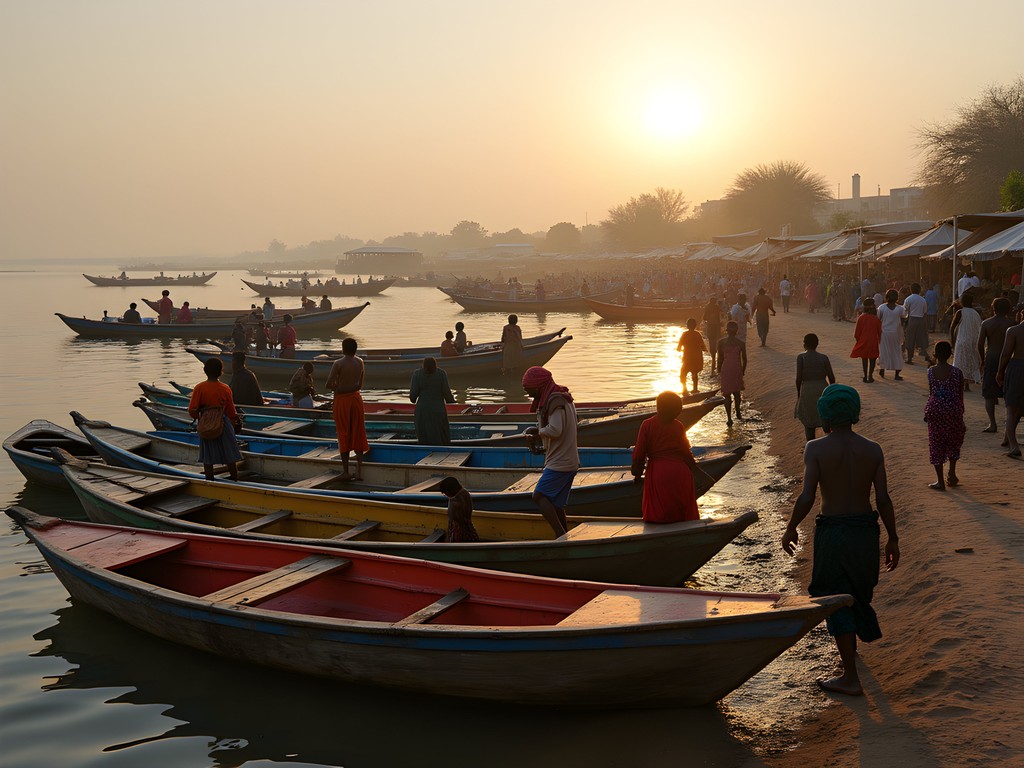
💡 Pro Tips
- Learn basic French phrases—English isn't widely spoken outside tourist establishments
- Carry a scarf for women to cover hair when appropriate and for everyone as protection from dust
- Always ask permission before photographing people—offering to send prints via local shops goes a long way
The Port: Mopti's Beating Heart
If Mopti has a soul, you'll find it at the port. This isn't just a transportation hub—it's the economic and cultural center where centuries-old trading traditions continue uninterrupted. My second day, I woke before sunrise (jet lag has some benefits) and witnessed the port coming alive in the golden morning light.
Pinasse boats—long, narrow vessels that serve as the region's primary transportation—dock tightly together, creating a floating marketplace that buzzes with activity. Fishermen display their morning catch while women sell everything from spices to handcrafted pottery. The scents are intoxicating: fresh fish, exotic spices, diesel from boat engines, and the unmistakable earthiness of the Niger River itself.
To truly experience the port like a local, I recommend hiring a guide through your accommodation. Mine was Ibrahim, a Bozo fisherman who'd navigated these waters since childhood. For about 10,000 CFA (roughly $17), he showed me hidden corners of the port and translated conversations with traders who've never encountered tourists.
The real magic happens at sunset when the harsh desert light softens, casting an amber glow over everything. I'd grab a spot near the harbor master's office (a small concrete building with a blue door) and watch the day's final transactions as boats prepared for overnight journeys to Timbuktu or returned from distant villages.
One evening, a group of Tuareg traders invited me to share tea aboard their pinasse. We sat cross-legged on woven mats as they prepared three rounds of tea—the first bitter as death, the second sweet as love, and the third gentle as life, as the saying goes. Communication happened through broken French, elaborate hand gestures, and plenty of laughter. These unplanned moments became the highlight of my Mopti experience.
For photographers, the port offers endless opportunities, but be respectful and ask permission. My travel camera with its discreet size and excellent low-light capabilities captured the port's energy without being intrusive.
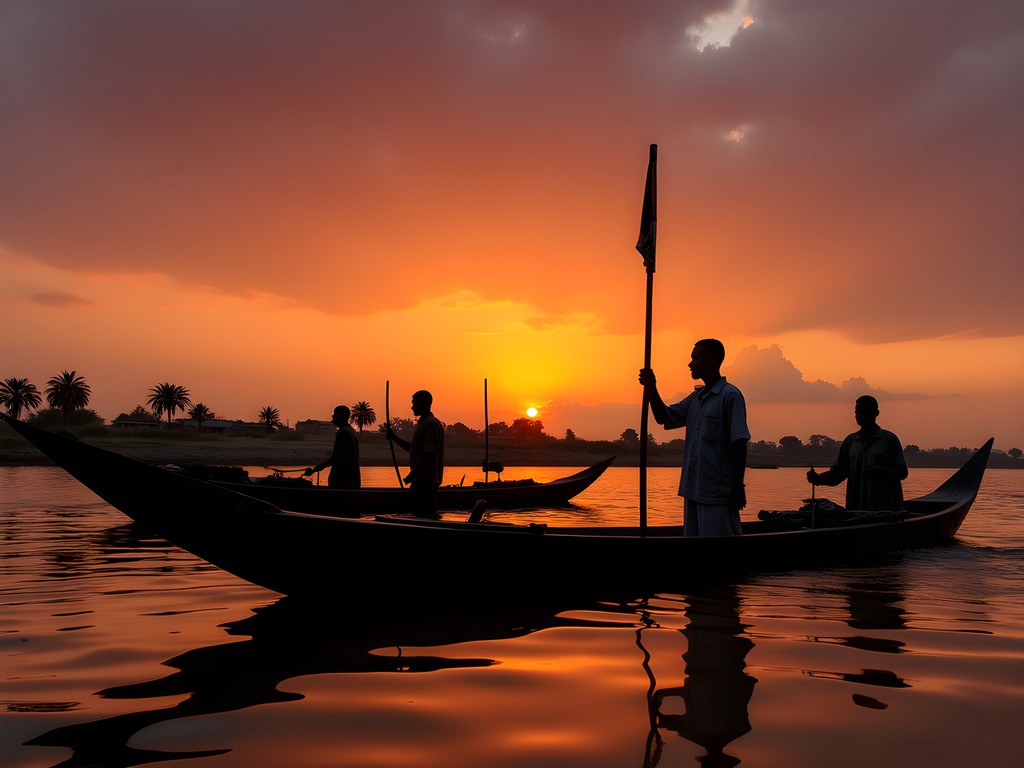
💡 Pro Tips
- Visit the port at both sunrise and sunset for dramatically different atmospheres and lighting
- Negotiate boat trips in advance—prices increase significantly once you're already at the port
- Bring small bills for purchases and keep valuables secure in a concealed money belt
Beyond the Tourist Trail: Local Markets & Neighborhoods
While Mopti's port might be its most photographed feature, the city's true character reveals itself in its markets and residential quarters. The Grand Marché operates daily, but Thursday's expanded market transformed my understanding of 'busy.' Picture narrow alleys packed with vendors selling everything from handwoven Bogolan (mud cloth) textiles to medicinal herbs I couldn't begin to identify.
Unlike markets geared toward tourists, Mopti's Grand Marché exists primarily for locals. This means authentic experiences but requires respectful navigation. I found wearing neutral colors and carrying my anti-theft daypack kept me both inconspicuous and secure. The crossbody design and locking compartments gave me peace of mind while navigating crowded sections.
The textile section became my weakness—I spent hours examining intricate Bogolan patterns while vendors patiently explained their symbolic meanings. When purchasing, remember that bargaining is expected but should be done respectfully. My approach? Start around 60% of the initial price and work toward a middle ground that feels fair to both parties.
Beyond the market, Mopti's neighborhoods offer glimpses into everyday life. The Komoguel district, with its magnificent mud-brick mosque, showcases Sudano-Sahelian architecture at its finest. Wandering its quiet streets in late afternoon, I watched children play soccer with makeshift balls while women prepared evening meals in shared courtyards.
The Taïkiri neighborhood, less visited by the few tourists who make it to Mopti, became my favorite afternoon retreat. Here, artisans work from small workshops, crafting everything from jewelry to leather goods. Mohammed, a third-generation leatherworker, showed me how he creates intricate designs using tools inherited from his grandfather. I left with a handcrafted leather journal that cost less than a fancy coffee back home but carries infinitely more meaning.
For a truly local experience, visit the small night market near the Debo Hotel where food vendors serve regional specialties. The grilled fish with spicy sauce became my dinner of choice, costing just 1,500 CFA (about $2.50) and delivering more flavor than many Michelin-starred restaurants I've visited across Europe.
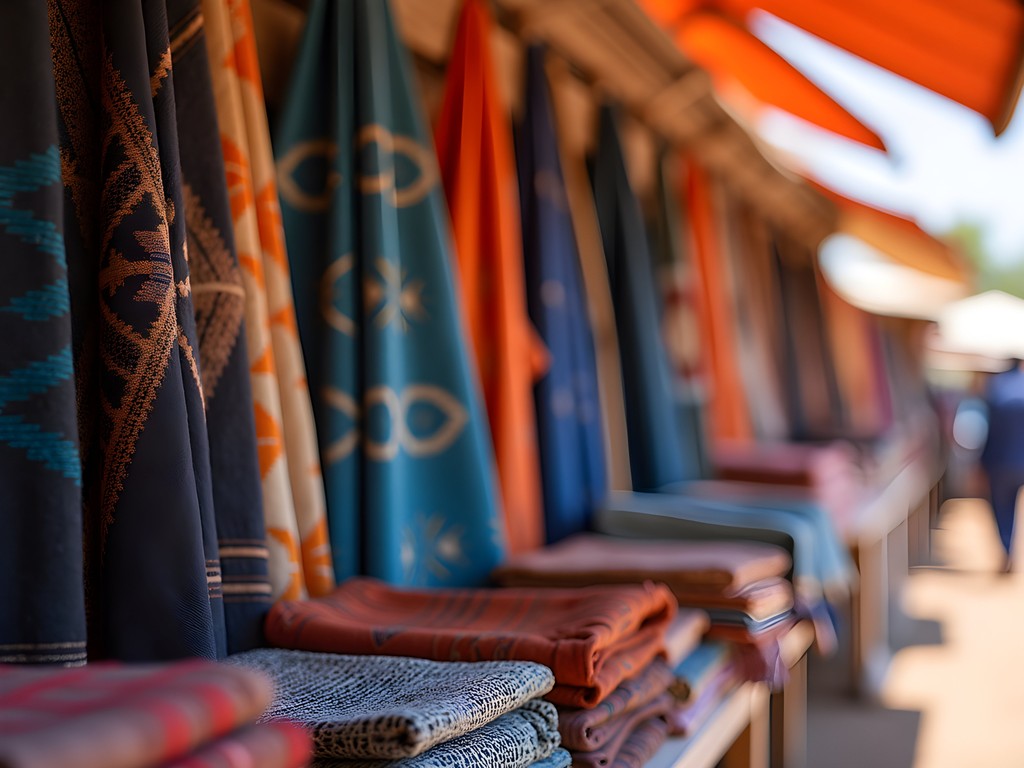
💡 Pro Tips
- Visit markets early morning for the freshest selection or late afternoon when prices might be negotiated lower
- Carry small denominations of CFA and keep larger bills separate and well-hidden
- Learn the phrase 'N'y son' (I'm just looking) to browse without pressure
Sustainable River Journeys: Exploring by Pinasse
No visit to 'Mali's Venice' is complete without experiencing life on the water. While day trips on motorized boats are readily available, I opted for a more sustainable and immersive approach: traditional pinasse journeys with local boatmen who've navigated these waters for generations.
These wooden vessels—recognizable by their elongated shape and colorful designs—have transported people and goods along the Niger for centuries. Through my guesthouse owner, I connected with Amadou, a Bozo fisherman who offers multi-hour excursions using a combination of motor (when necessary) and pole-pushing in shallow waters.
For 15,000 CFA (about $25), we arranged a dawn journey to nearby fishing villages inaccessible by road. We departed as the first light painted the sky in watercolor hues, the water so still it perfectly mirrored the awakening landscape. Bringing my compact binoculars proved invaluable—the Niger River basin hosts incredible birdlife, from elegant herons to vibrant kingfishers darting above the water.
What made this experience special wasn't just the stunning scenery but the intimate glimpse into river life. We stopped at a small Bozo fishing camp where families live on their boats during fishing season. Children paddled tiny canoes with the skill of seasoned sailors, while women smoked the morning catch on small fires built atop clay platforms on their boats.
Amadou explained sustainable fishing practices that have preserved the river's ecosystem for generations—knowledge increasingly threatened by climate change and upstream damming. When I asked about tourism's impact, he was thoughtful: 'We need visitors to understand our way of life, but we need them to come with respect.'
For those with more time, multi-day pinasse journeys to Djenné (home to the world's largest mud-brick building) offer profound connections to the region. These typically cost 25,000-30,000 CFA per day including meals, but the memories—sleeping under desert stars, bathing in the river at sunset, and waking to mist rising off the water—are priceless.
A word of caution: river levels vary dramatically by season. January offered perfect conditions with enough water for navigation but not so much that villages were flooded. Always check current conditions before planning extended river journeys.
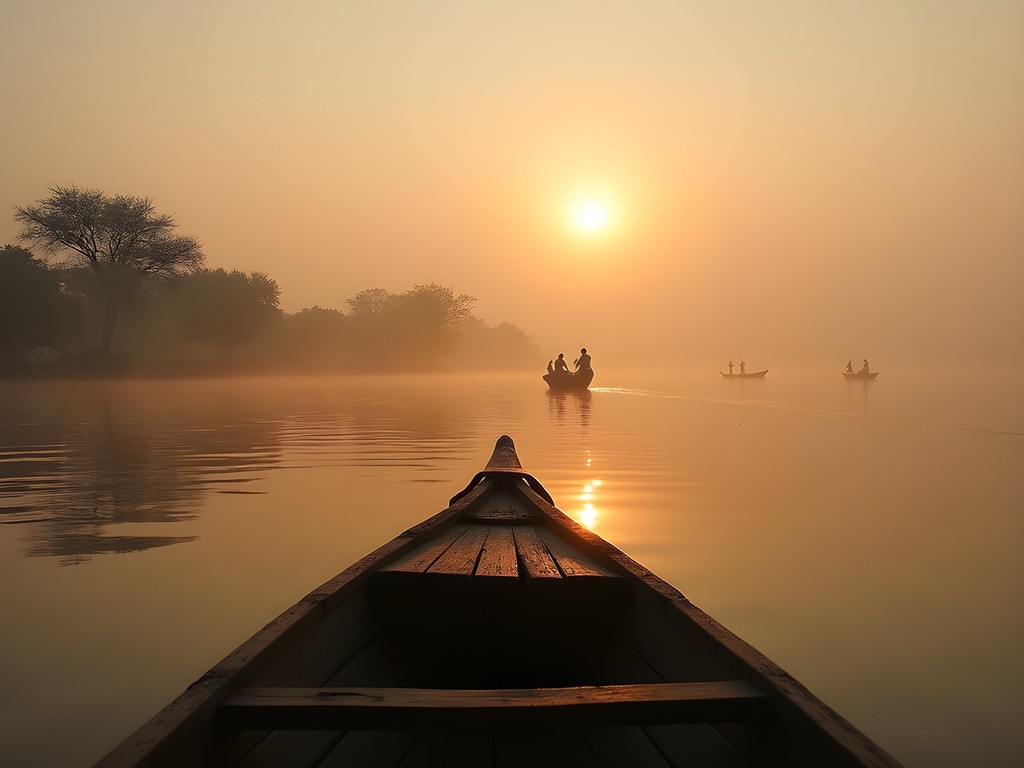
💡 Pro Tips
- Arrange boat trips through your accommodation rather than directly at the port for better rates
- Pack biodegradable wet wipes for freshening up during longer journeys—bathroom facilities are nonexistent
- Bring twice as much water as you think you'll need—the desert sun is deceptively dehydrating even on the water
Cultural Connections: Music, Soccer & Local Life
My travel philosophy has always been simple: authentic connections trump tourist attractions every time. In Mopti, these connections came through three universal languages—music, sports, and food.
Mali's musical heritage ranks among the world's richest, with griots (traditional storytellers/musicians) preserving history through song for centuries. While Bamako hosts more formal performances, Mopti offers intimate encounters with local musicians. My guesthouse owner introduced me to his cousin's wedding celebration where I experienced the hypnotic rhythms of traditional Malian music up close.
The ngoni (a string instrument ancestral to the banjo) and djembe drums created polyrhythms so complex yet so natural that even my soccer-trained feet couldn't help but dance. When the musicians noticed my enthusiasm, they motioned me closer. Before I knew it, I was attempting to follow along with women who've danced these patterns since childhood. My clumsy efforts earned good-natured laughter that bridged any language barriers.
Soccer, my lifelong passion, proved an even more effective connector. Spotting a group of teenagers playing with a makeshift ball one afternoon, I gestured to join. Those two hours of barefoot soccer on dusty ground—communicating through universal signals and celebratory high-fives—revealed more about local life than any guided tour.
One player, Moussa, spoke enough English to invite me to meet his family afterward. Their modest compound became the setting for an impromptu dinner where his mother insisted I learn to make tigadegena (peanut stew). The simple act of sitting on a low stool, grinding peanuts with a stone mortar while women shared gossip in Bambara (occasionally translated for my benefit), remains one of my most treasured Mopti memories.
Food became another bridge to local culture. The riverside restaurants serving tourists offer decent meals, but the real culinary experiences happen in small family compounds. If invited to share a meal (a common expression of hospitality), accept graciously and be prepared to eat from a communal bowl using your right hand. Bringing a small gift—I carried a portable solar light which proved incredibly useful in an area with frequent power outages—shows appreciation without flaunting wealth disparities.
These cultural exchanges aren't listed in guidebooks but form the heart of authentic travel. They require openness, humility, and willingness to step outside comfort zones—qualities that define sustainable travel in vulnerable regions like Mali's river delta.

💡 Pro Tips
- Learn basic greetings in Bambara ('I ni ce'—hello) to show respect for local culture
- Bring photos of your home/family to share—this creates reciprocal exchange rather than one-sided observation
- Accept invitations to local homes when they feel genuine, but never photograph inside without explicit permission
Final Thoughts
As my pinasse glided away from Mopti's shore on my final morning, the city's skyline of mud-brick buildings and minarets slowly dissolving into the misty horizon, I felt that familiar bittersweet ache that only comes from places that have worked their way into your soul. Mali's 'Venice of the Desert' isn't an easy destination—it demands patience, cultural sensitivity, and a willingness to embrace uncertainty. But for travelers seeking authentic connections in an increasingly homogenized world, Mopti offers riches that can't be quantified in star ratings or Instagram likes. This riverside gem taught me that true sustainability in travel isn't just about environmental impact but about preserving cultural dignity through respectful exchange. Whether you're watching sunset paint the Niger River golden, sharing tea with Tuareg traders, or attempting to master complex rhythms alongside local musicians, Mopti rewards the intrepid with moments of pure, unfiltered humanity. ¿Y sabes qué? In our complicated world, these authentic connections might be the most valuable souvenirs of all. Until next time, Mali—you've left your mark on this viajera's heart.
✨ Key Takeaways
- Mopti rewards patient travelers with authentic cultural exchanges impossible in more touristed destinations
- Local connections through music, sports, and food create the most meaningful experiences
- Sustainable travel here means respecting cultural traditions and supporting local economies
- River journeys offer the most immersive way to understand the region's unique way of life
📋 Practical Information
Best Time to Visit
November to February (cool, dry season)
Budget Estimate
$30-50 per day including accommodation, food and local transportation
Recommended Duration
5-7 days minimum
Difficulty Level
Challenging

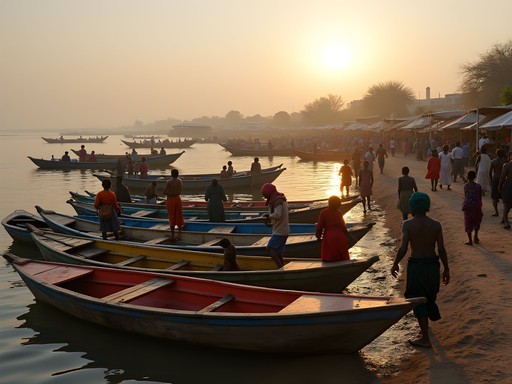
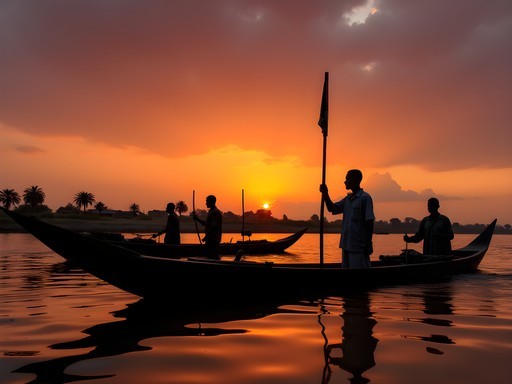


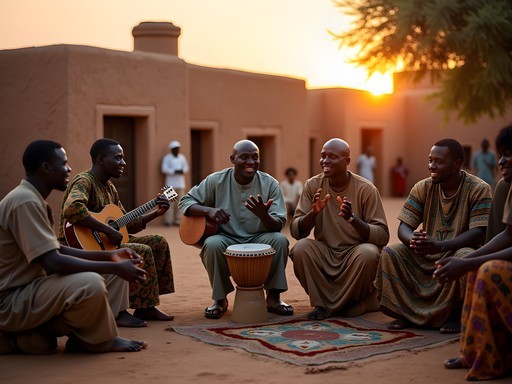


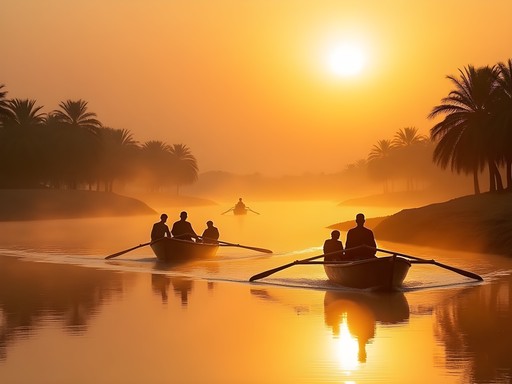






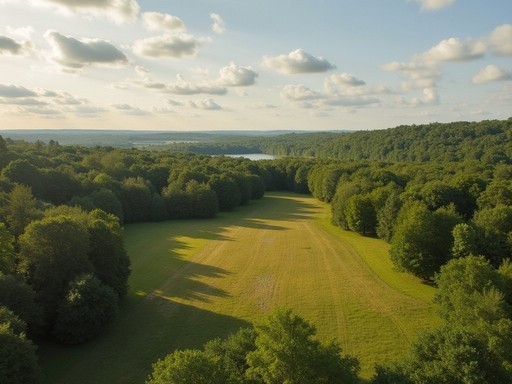
Comments
moonwalker
How difficult was it to arrange the pinasse journey? Looking at doing something similar but worried about finding reliable operators.
Gabriella Jenkins
Not difficult at all if you go through your accommodation. I stayed at La Maison Rouge and they connected me with a captain they've worked with for years. Prices are negotiable but expect around 25,000 CFA (~$45) for a half-day private journey. Multi-day trips to Djenné or Timbuktu need more planning.
moonwalker
Perfect, thanks! That's way more affordable than I expected.
springlegend
Those sunset photos from the river are absolutely stunning! Adding Mopti to my bucket list!
Sarah Powell
What a refreshing post about a destination that rarely gets the attention it deserves! I visited Mopti in 2018 as part of a longer West African journey, and your description of it as 'Venice of the Desert' is spot on. The interconnected waterways create such a unique ecosystem of commerce and culture. One thing I'd add for anyone planning to visit: the early morning hours (5-7am) at the port offer the most authentic experience. That's when local fishermen return with their catch and the whole place erupts in a fascinating trading system that hasn't changed for centuries. I documented this in my Mali series and found that respectfully asking permission before photographing people went a long way. Also worth noting - the mud architecture in the Komoguel neighborhood deserves special attention. The craftsmanship is disappearing as more modern building materials take over. Did you get a chance to visit any of the mud-brick masons at work?
Gabriella Jenkins
Thanks Sarah! Yes, I did visit a family of masons in Komoguel - absolutely fascinating process. You're right about the early morning port scene - that's when I got my best photos too. The light is magical at that hour.
moonwalker
Sarah - did you find it easy to arrange transportation between towns in Mali? Thinking about a similar journey.
Sarah Powell
It wasn't always straightforward, but that was part of the adventure. Shared taxis between major towns, but for remote areas, having a guide arrange transport was essential. Flexibility is key - schedules are more suggestions than rules there!
roamphotographer
Beautiful post! I'm planning a West Africa trip for next year and wondering about safety in Mopti. Did you travel solo or with a guide? Any specific neighborhoods to avoid? The river journeys look amazing but I've heard mixed things about the current situation there.
Gabriella Jenkins
I hired a local guide through my guesthouse which I'd definitely recommend. The situation changes frequently, so check recent advisories before going. I felt comfortable in the main port area and central neighborhoods, but arranged all village visits and river journeys through established operators. My travel insurance gave me peace of mind too.
skyguide
This brought back so many memories! I visited Mopti back in 2019 and was blown away by the port activity. Those pinasse boats are something else - watching them load up with everything from goats to motorcycles was like a real-life game of Tetris. Did you get a chance to try any of the river fish grilled right at the port? That was a highlight for me!
Gabriella Jenkins
Yes! The grilled capitaine fish was incredible. I loved how they serve it with that spicy sauce on the side. Nothing beats eating it while watching the sunset over the river!
skyguide
That sauce! I've been trying to recreate it at home with no luck. Some things you just have to go back for!
backpackphotographer
Great post! How many days would you recommend for Mopti? Is it possible to arrange the pinasse journeys once you're there or better to book ahead?
Marco Flores
I'd say minimum 3 days for Mopti itself, plus extra if you want to do longer river journeys. You can absolutely arrange pinasses on arrival - usually cheaper and more flexible that way. Just head to the port and negotiate directly with the captains!
beachzone
How did you handle the language barrier in Mopti? Is French enough or should I learn some basic Bambara phrases?
springguide
French will get you far with guides and in hotels, but learning a few Bambara greetings goes a long way with locals. 'I ni ce' (hello) and 'I ni baara' (thank you) opened many doors for me!
bluefan
This post gives me SERIOUS wanderlust! Adding Mopti to my bucket list right now!!!
Ana Robinson
What a nostalgic read! We took our kids (8 and 11) to Mali last year, and they still talk about our pinasse journey from Mopti. The captain let them take turns steering, and the locals we met along the river were incredibly welcoming to our family. We stayed at a small guesthouse run by a French-Malian couple who arranged a cooking class for us - learning to make tigadegena (peanut stew) with a local grandmother was such a special experience. For families considering this trip, I'd recommend bringing a good pair of binoculars for bird watching on the river - we spotted so many species! Our travel journal is now filled with the kids' drawings of Mopti's boats and buildings.
bluefan
Ana, that sounds amazing! Would you say it's doable with younger kids too? Mine are 5 and 7.
Ana Robinson
Absolutely! Just bring plenty of sun protection, snacks, and activities for the boat rides. The locals adore children and yours will get lots of attention!
sunnyfan
Really cool post! Love seeing places that aren't on everyone's radar.
Venture X
Premium card with 2X miles, $300 travel credit, Priority Pass